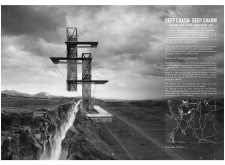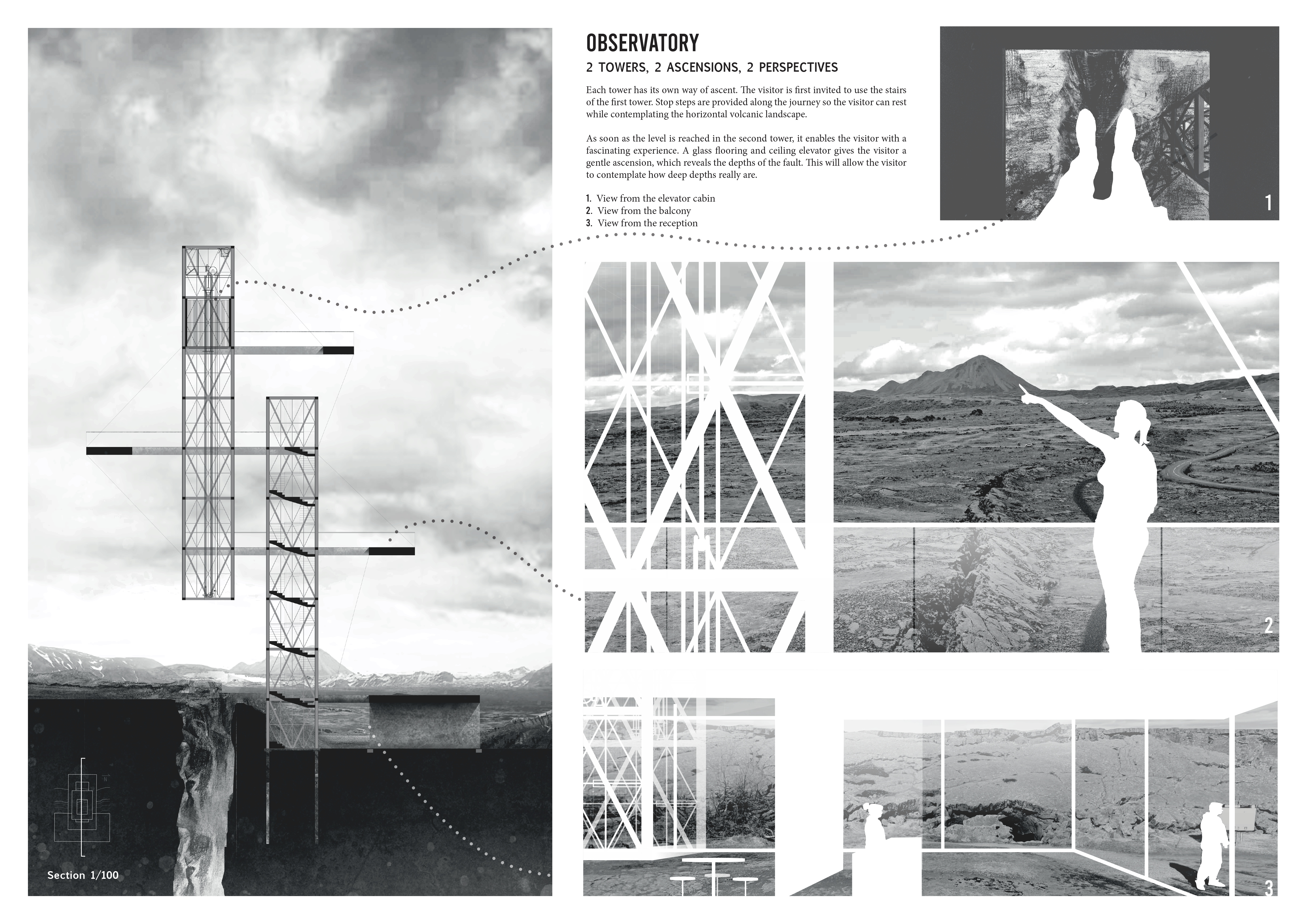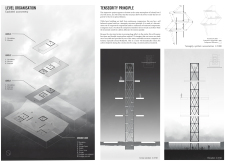5 key facts about this project
"Deep Chasm, Deep Charm" offers a thoughtful exploration of the Icelandic landscape. Located where the North American and Eurasian tectonic plates meet, the design features two observatory towers that encourage interaction with the striking geological features. The goal is to create a space where visitors can connect with the natural environment and understand the geological processes that shape this region.
Conceptual Framework
The design focuses on the tension created by the geological activity of the tectonic plates. Each tower acts as a tool for observing the vast landscape while reflecting the forces at work beneath the surface. Visitors can experience both the immediate beauty of the environment and the broader geological stories that it tells through distinct ascent methods.
Spatial Organization
Accessing the towers is a journey in itself. One tower includes a staircase with resting areas, allowing visitors to pause and take in the views of the volcanic terrain. The second tower features a glass elevator, lifting visitors upward and creating a sense of floating above the ground. These differing experiences highlight how movement through the towers can enhance engagement with the surrounding landscape.
Structural Approach
The project uses a tensegrity structure, which combines tension and compression to create stability with minimal materials. This clever design results in a lightweight framework that appears to hover above the ground. By reducing material use, the structure maintains a delicate balance that connects it to the rugged landscape, emphasizing the relationship between the built environment and the natural world.
Materials and Sustainability
Recycled steel is the main material mentioned, indicating a commitment to sustainability. Choosing recycled materials helps to lower carbon emissions in construction. This decision supports the architectural concept while ensuring that the design is in line with environmental considerations.
Visitors can fully appreciate the depth of the chasm from the towers, as they stand open to the surroundings. The design serves not only as a viewpoint but also as a space for reflection on the powerful forces of nature that shape the world.






















































